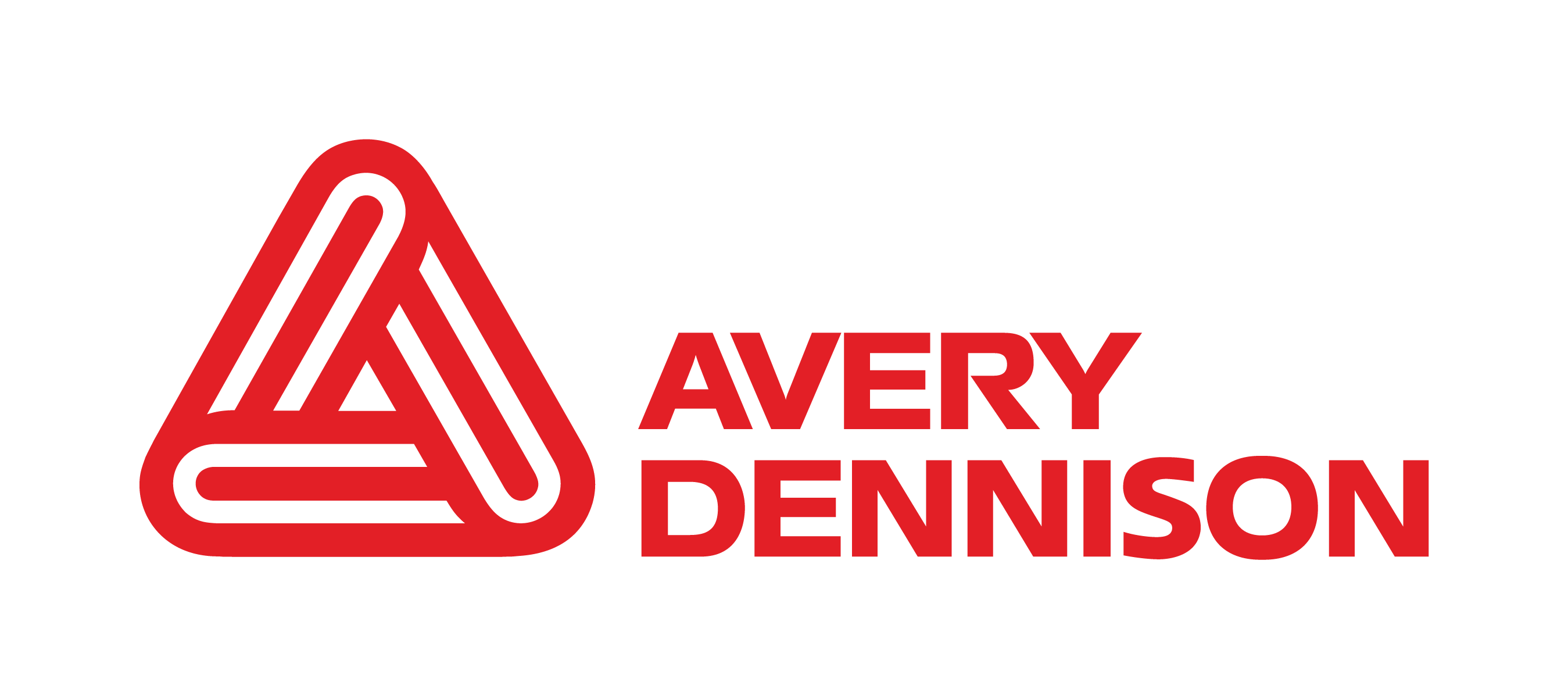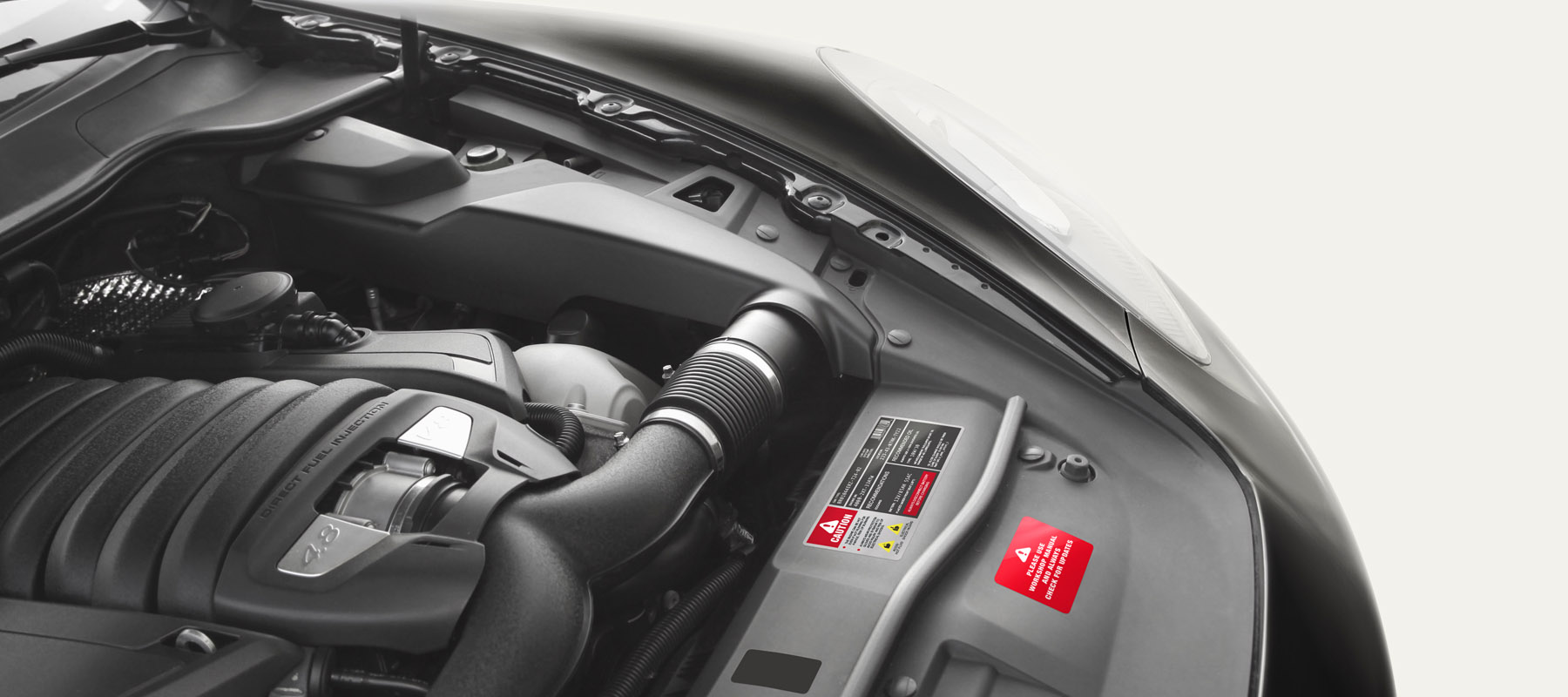As vehicle manufactures continue to make cars lighter, what changes are you seeing in the selection of automotive adhesives and label materials?
Ben: Automotive brand owners are increasingly using low surface energy, or LSE, materials like plastic and carbon fiber for a range of reasons around performance, cost, efficiency, and quality, as well as to make the car lighter to increase fuel and energy efficiency. We see these materials being adopted for interior components like dashboards and instrument panels, as well as exterior ones like bumpers, lighting, and even as body trim in powertrains.
As a result, we’ve seen an increased demand for adhesives specifically tested for LSE applications, as conventional adhesives designed to provide long-term stability do not always bond easily to LSE substrates. In particular, there is a need for labels that perform well when used on HDPE, PP, and PTFE surfaces.
To perform on LSE substrates, what challenge do pressure sensitive adhesives need to address?
Martin: Labeling these substrates is inherently challenging for today’s manufacturers. Not only must label materials adhere to the more difficult LSE substrates, they often need to withstand the harsh chemicals and high temperatures that are common in automotive and industrial applications.
Neither rubber nor traditional acrylic adhesives are able to provide an answer. Rubber adhesives are sticky enough for strong adhesion, but lack the chemical resistance required in industrial environments. Acrylic adhesives offer the necessary chemical resistance, but are not tacky enough to take hold.
Ben: The adhesives also must be suitable for a variety of curved and textured substrates that are used in different automotive components made from LSE materials. As well as comply with OEM and industry specifications. In some cases, they must also offer thermal management and dielectric strength properties. For instance, EV battery labels can have an informative purpose, such as warning signals or a brand logo, while also providing functionality, such as electrical insulation or being used in combination with an RFID function.
What is Avery Dennison’s approach to solving these challenges?
Martin: Avery Dennison’s Rubber-hybridized acrylic (RHA) adhesive technology was developed for LSE labeling application by combining the strength of rubber adhesive with the durability of acrylic. RHA has a strong backbone of acrylic chains that provide chemical and temperature resistance, combined with the high tack of rubber to adhere to challenging substrates.
How do RHA label solutions help converters?
Martin: RHA has a very broad application window in the automotive space, from gas cap to dashboard, which can help ease the pressure of application complexity that many automotive converters face. The ability to mix and match RHA with a variety of facestocks can help to simplify procurement, streamline qualification, and potentially reduce cost.
How do RHA label solutions help automotive manufactures?
Ben: Just as Martin mentioned for converters, the versatility of RHA is also a benefit for manufacturers by allowing label solutions for different surfaces, plastics, and environmental conditions to share a common adhesive. We’ve designed RHA labeling solutions to fulfil the requirements of various automotive brand owners to create qualified solutions for a range of interior and exterior applications, including engine compartments and EV batteries.
One of Avery Dennison’s RHA adhesives, S8049, also offers the end-user advantage of extended time to reposition labels before full adhesion occurs. Whereas many aggressive adhesives will instantly activate full adhesion, labels with S8049 can be repositioned or reapplied before the ultimate bond is formed.
Additionally, RHA is a globally available solution which is important in a global market like the automotive industry.
What do you expect to see from RHA solutions in the future?
Ben: We’re continuously working to qualify our RHA solutions for diverse applications across personal vehicles, commercial vehicles, agricultural, aircraft, and other segments. Aiming to provide an even wider portfolio of solutions that meet automotive and component maker label specifications.
Martin: We believe that RHA has the potential to grow into a new industry standard. We hope to develop and introduce new solutions that offer a broader range of facestocks, adhesive thickness, and opportunities for converters to incorporate RHA with their own inhouse solutions.
Learn more
For more information on labeling materials for lightweighting and other automotive trends, check on the on-demand recordings of our online event, Enabling the Cars of Tomorrow. For an overview of Avery Dennison’s durable solutions for the automotive industry, have a look at the Automotive Label Materials product guide.




